The design is inspired by the form and structure of the palm leaf of the Washingtonia Robusta specie. The way each leaf folds in the middle to gain the spatial rigidity and the leaves further array centrally led us to the origami principle.

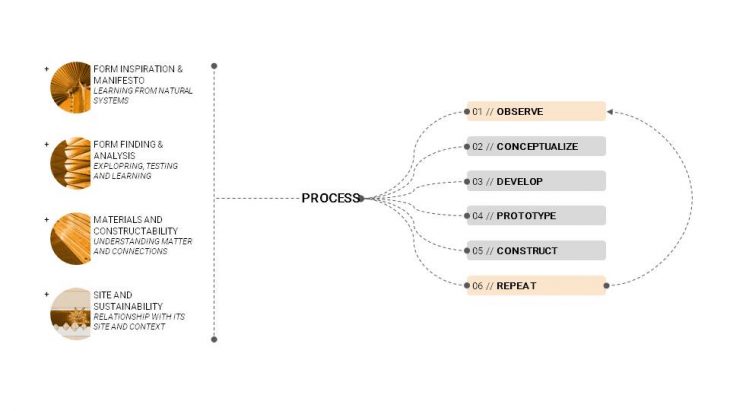
Washingtonia Robusta originates from the Americas and now is spread all over the hot part of the globe. We have explored the structure of its leaf.
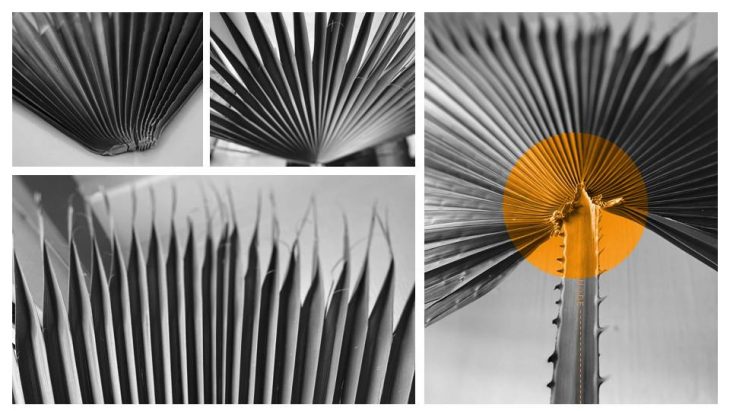

We started designing a shelter basing on the same structural logic of the rigidity created by an angle

Our design objective was to create an urban item which could be produced globally as a kit of parts from the locally sourced materials, be assembled on a large variety of sites, be disassembled and reused on a different location and be modular, so that the user could get a few of them and cluster them in various ways.

The idea of the rigid angle and modularity has led us to the origami folding principles. We have explored it in Kangaroo and created a family of prototypes.
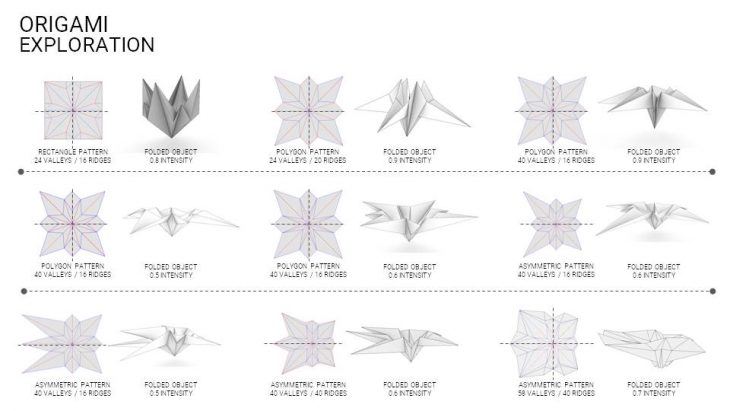
Further design development has revealed the problems: the pointed support was unstable and the assymmetrical shape was threatening the stability even more. It was not very good for clustering, either. Throgh a series of Karamba simulations we have come to the optimized shape – symmetrical, with four legs and more developed m-shape supports sections. Further exploration of the object’s materiality has also shown that the origami logic, actually, didn’t work structurally in our case, because we were not folding anything but rather assembling the flat sheets. We have chosen marine plywood as the main material and the plywood sheets were to be joined with the stiff type of connection in the corner, firmly attaching the sheets at a certain angle. We have come to the need to introduce the tensioning cables, too, because any folded forms tends to unfold.
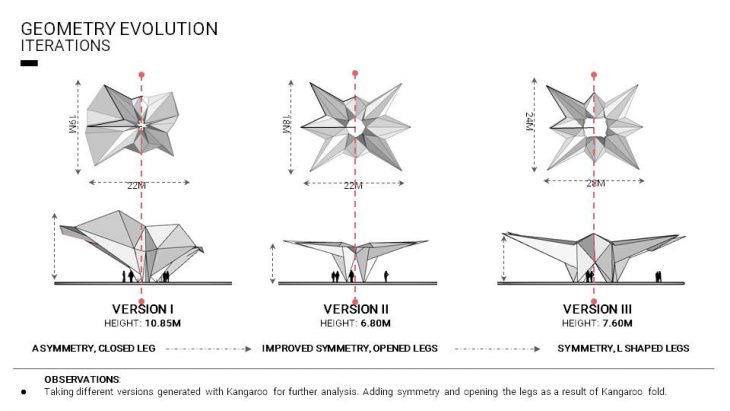
Further optimization was aimed at reducing the objects mass. We have also run into the problem of the standard plywood sizes, which were insufficient for the parts we have designed. Our next step was to break each flat part by further triangulation. At this point we started considering the replacement of plywood with timber, since now we needed rather linear than sheet elements.
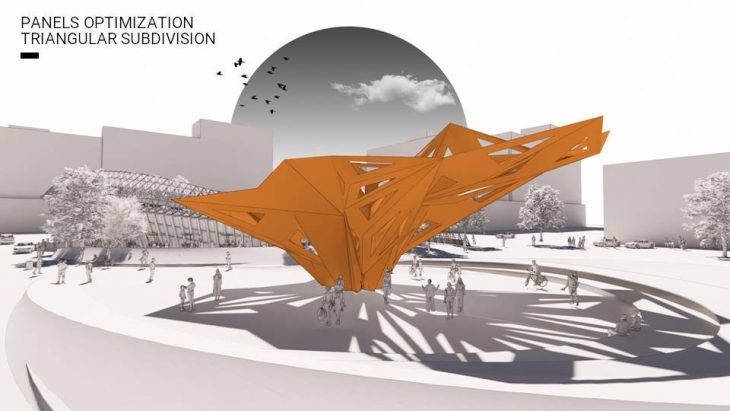
The sheet breakdown throufg the triangulation was recognized as a failure, because it was reducing the shadow cast by the object. We have taken a look at the Washingtonia leaf, which was our initial inspiration, and produced the final version, in which every flat part in the kit was a timber frame.

The object we have designed is site-indifferent. It can perform a single item…

…or be arrayed along the walkway…

…or placed to fill the urban voids…

…or go to the festival and be a temporary event space, kiosk, etc…

CREDITS:
Students: German Bodenbender, Andrey Okolokulak, Sergey Kryuchkov
Lead Faculty: Arthur Mamou-Mani
Support Faculty: Krishna Bhat
